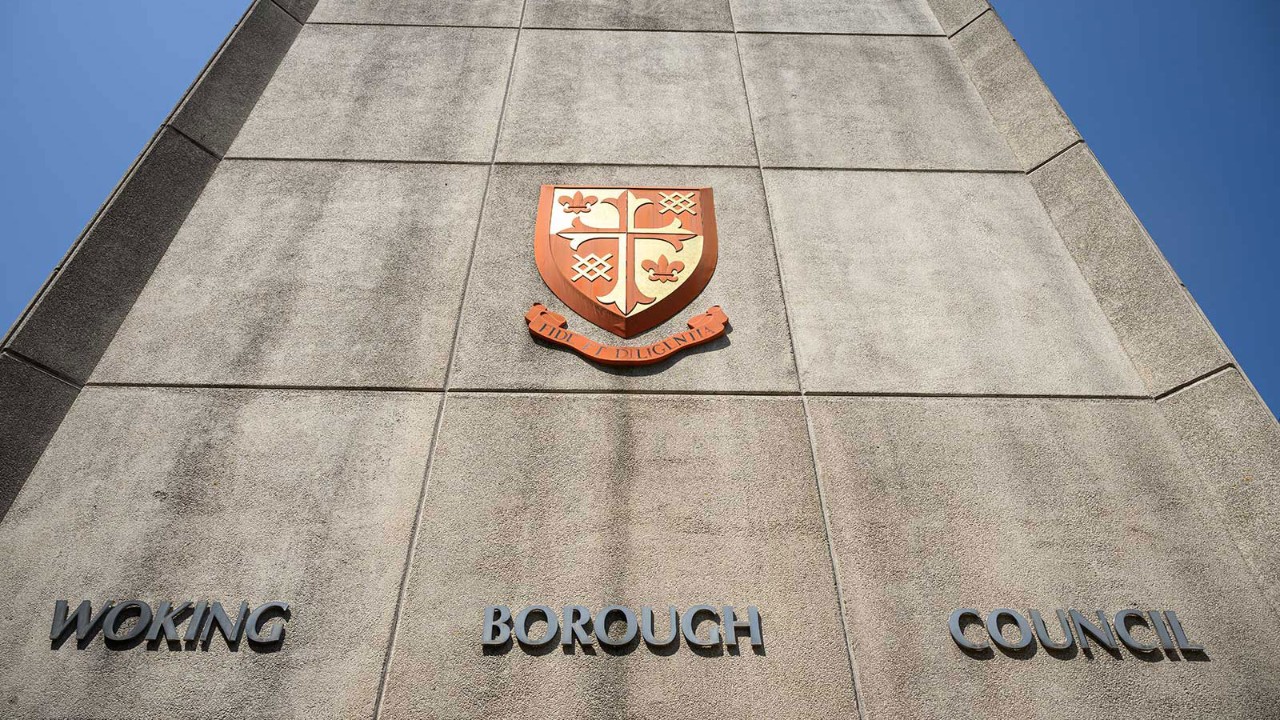
What is to blame for the crisis in local government finances? Since 2018 a steady stream of councils have gone bust, including four last year alone.
In recent months local authority investment strategies have come to be viewed by many as the bête noire of municipal finances. Capital spent on assets such as commercial property (some of it ‘out of area’), and others like solar farms, have been blamed for the downfall of councils, some of which stand accused of mismanaging public funds.
‘Many local authorities thought the austerity policy would be transient and used reserves to keep going’
But these asset allocation strategies are not the only issue to blame for the poor state of finances in local governments across England. The real picture is much more complicated.
Section 114 on the rise
‘The basic cause is lack of funding,’ says Richard Harbord, a veteran local government finance chief now serving as a financial consultant to councils. ‘Thus, austerity is the starting place. Many local authorities thought the government’s austerity policy would be transient and they used reserves to keep going rather than cutting services.’
The most recent councils to go bust – or in local government parlance, issue section 114 notices – are Thurrock and Birmingham. Birmingham, which issued a notice in September last year, has troubles stemming largely from a court ruling that it must pay £760m to settle an equal pay claim. Thurrock on the other hand issued its section 114 notice and revealed a £500m deficit after making investments in solar energy and other businesses.
But there have been other section 114s; notably, Croydon, Slough, Woking, Nottingham City Council and Northamptonshire, twice.
Core spending power remains 11% lower than it was when ‘austerity’ began
Other councils have warned they could issue 114s in the near future, according to a House of Commons’ report. And at the end of February, the crisis hit the headlines again when several authorities were granted ‘capitalisation directions’ (permission to book some revenue spending as capital expenditure) to stave off further crises.
So serious has the situation become that the Office for Local Government (Oflog) is working on a new system of early warning signs to spot councils in financial distress.
Mitigating factors
But context is important for council finances. Since 2010, and the advent of an ‘austerity’ approach to budgets, there have been major cuts in local government’s ability to spend on services. In fact, they are some way behind their 2010 position, even though the most recent local government ‘settlement’, or central government grant, increased ‘core spending power’ (the combination of central government grants, council tax and retained business rates) by £4.5bn to £67.7bn for 2024-25.
According to the House of Commons’ report, core spending power dropped by more than 20% between 2010 and 2019. It has been climbing, but it remains 11% lower than it was when ‘austerity’ began.
Central government played its part in encouraging councils to be more ‘commercial’
Pressure on budgets has not only come from cuts. It comes at the same time councils have seen a marked increase in demand for services, in particular adult and children’s social care.
According to Stuart Hoddinott, senior researcher at the Institute for Government, expansion of England’s population aged 65 and over, and increasing disability among working-age adults, have increased demand for social care.
Children services have seen an increase in need too, and all of this at a time when local authorities must manage increases to the national minimum wage, to which they are quite exposed.
Commercialisation
To counter strained budgets, councils turned to making investments, backed by loans from a central government department, the Public Works Loan Board (PWLB), at better-than-market rates.
Local authorities turned to the PWLB to fund projects like town centre redevelopments, solar farms and, of course, property investments. ‘There’s definitely been an increase in local authorities taking risky investments in the last 10 years,’ Hoddinott says.
Figures bear out the rise in borrowing. In 2013-14, council borrowing was just over £72.7bn. By 2019-20 it was more than £92.4bn. For the past three years, borrowing has been falling, a sign that the urge towards investment has already reversed. But councils didn’t plunge into borrowing uninvited. Central government played its part in encouraging councils to be more ‘commercial’.
The 2011 Localism Act gave councils more power to act commercially, but there have been numerous efforts to push councils towards raising funds outside of grants and council tax.
Adrian Jenkins, founder and chief analyst with a strategic adviser to local government finance departments, says: ‘A lot of it was about investing to generate income to survive – that was the idea. No doubt it did get out of hand. Counsellors were investing in things they didn’t fully understand at times, and out of area too.’
It doesn’t help that local government audit has effectively collapsed
Whether councils should be making commercial investments in property, for example, particularly ‘out of area’, has been a long-running and contentious debate. The issue is complex. Some investments have worked, others have not paid off in the way hoped. But the borrowing costs have become an issue following the rise in interest rates.
‘Government urged local authorities to become more commercial during austerity,’ says Harbord. ‘This led to a surge in commercial investments and a number of those have turned out to be not good investments. The main reasons for that are that authorities have borrowed to finance and interest rates went up.’
But Harbord says he knows of one authority that has made a string of investments in its local area, all paying a ‘steady income’ exceeding the value of council tax revenues. ‘You cannot put a single label on all investments.’
Audit arrears
It doesn’t help that local government audit has effectively collapsed, with auditors late to sign off on one, two or even three years of accounts for many councils. Knowing that the causes of council bankruptcies are diverse does not, however, alleviate the problem. A report from the Local Government Information Unit (LGIU), a think-tank, recently said more than half the councils questioned in a survey would declare effective bankruptcy in the next five years, and 10% would do so within a year.
‘These problems are not insurmountable’
Jonathan Carr-West, LGIU’s chief executive, says ducking what has become a sector-wide crisis ‘risks more local authorities reaching a point of financial failure’.
The crisis in local government finance shows no sign of abating. As it continues, says Hoddinott, even councils that avoid investment ‘missteps’ could become the authorities to issue section 114 notices. A solution will need to address policy areas as diverse as the cost of special educational needs, homelessness, and adult and children’s social care – areas where councils have statutory obligations.
‘These problems are not insurmountable,’ says Hoddinott, ‘but they need careful thinking and policy-making’.



